Update 09.07.2018 -- Pythia: particle vs. detector level check (R = 0.2, 0.5)
Previously I checked how the particle and detector level recoil jet spectra compare to each other in embedding in order to get an idea of how large of corrections we should be expecting:
https://drupal.star.bnl.gov/STAR/blog/dmawxc/update-09062018-run-9-embedding-particle-vs-detector-level-check-r-02-05
To continue this investigation, I applied the calculated track efficiencies and track pT resolutions to pi0-triggered events in Pythia8 (with the minimum pThat set to 4 GeV/c). Then I matched the generated particle level (no efficiencies or resolution applied) to their corresponding detector level (with efficiencies and resolution applied) jets to create a response matrix. The track efficiency and pT resolution can be found in these posts:
https://drupal.star.bnl.gov/STAR/blog/dmawxc/update-04112018-run-9-pp-efficiency-different-binning-0
https://drupal.star.bnl.gov/STAR/blog/dmawxc/update-05072018-run-9-pp-resolution-study-final-parameterizations
Here are the results:
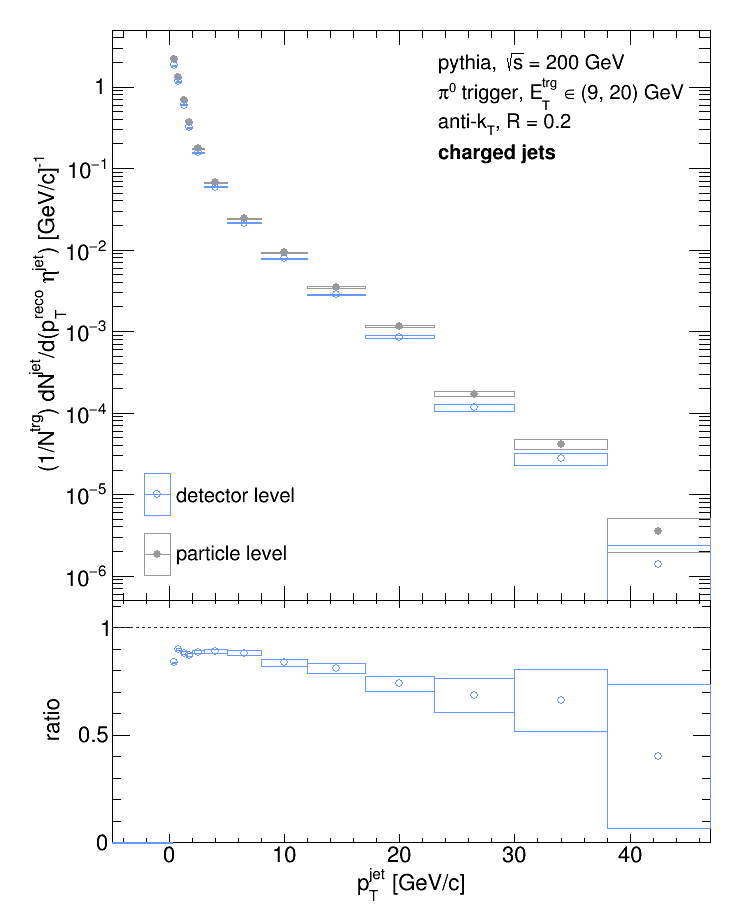
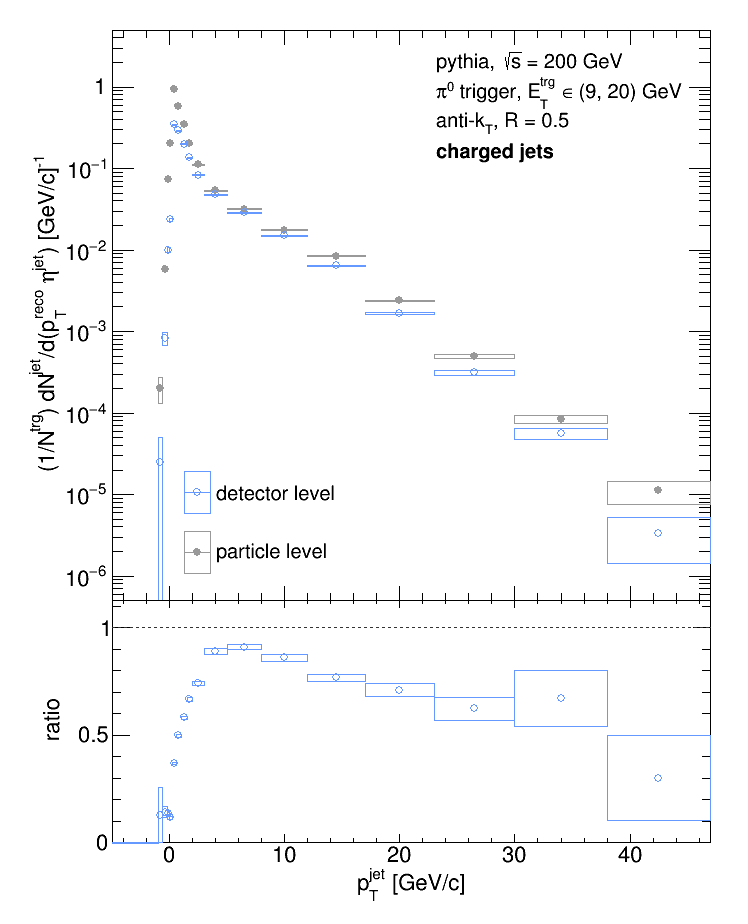
The fall-off at high pTjet is due to statistics running out in the track efficiency calculation. If need be, I tried fitting the efficiency curve so that we can smooth things out at high pT:
https://drupal.star.bnl.gov/STAR/blog/dmawxc/update-04172018-run-9-pp-efficiency-fit
And below I compare the response extracted from Pythia8 to the response extracted from the embedding sample.
R = 0.2:
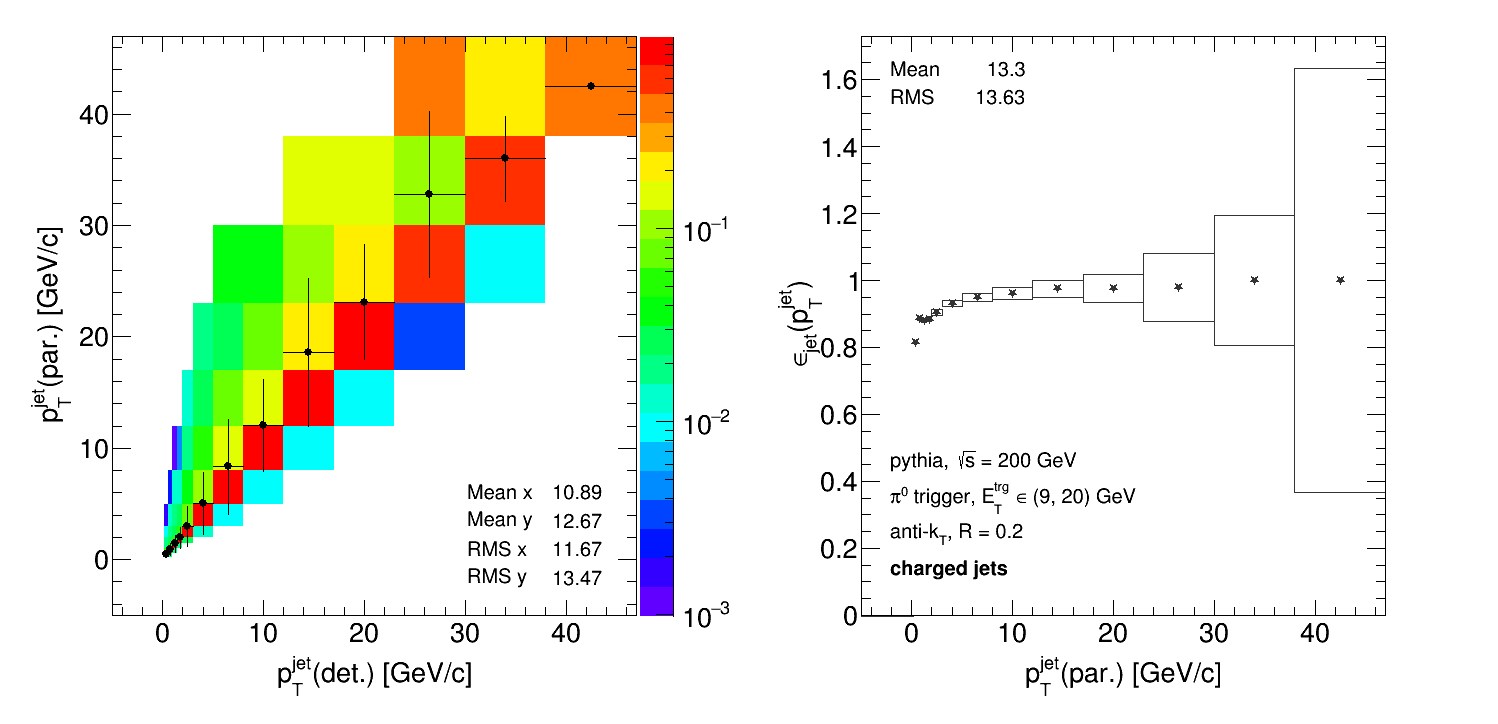
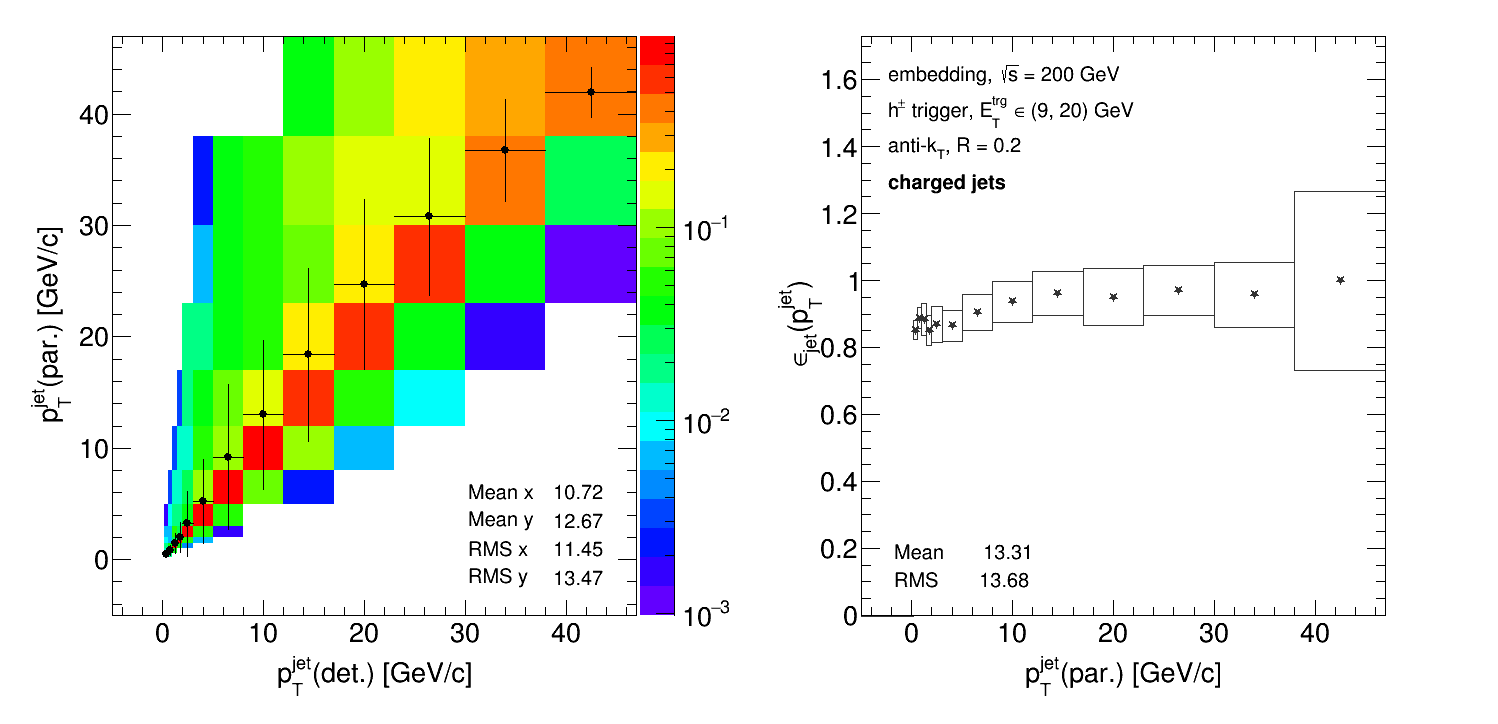
R = 0.5:
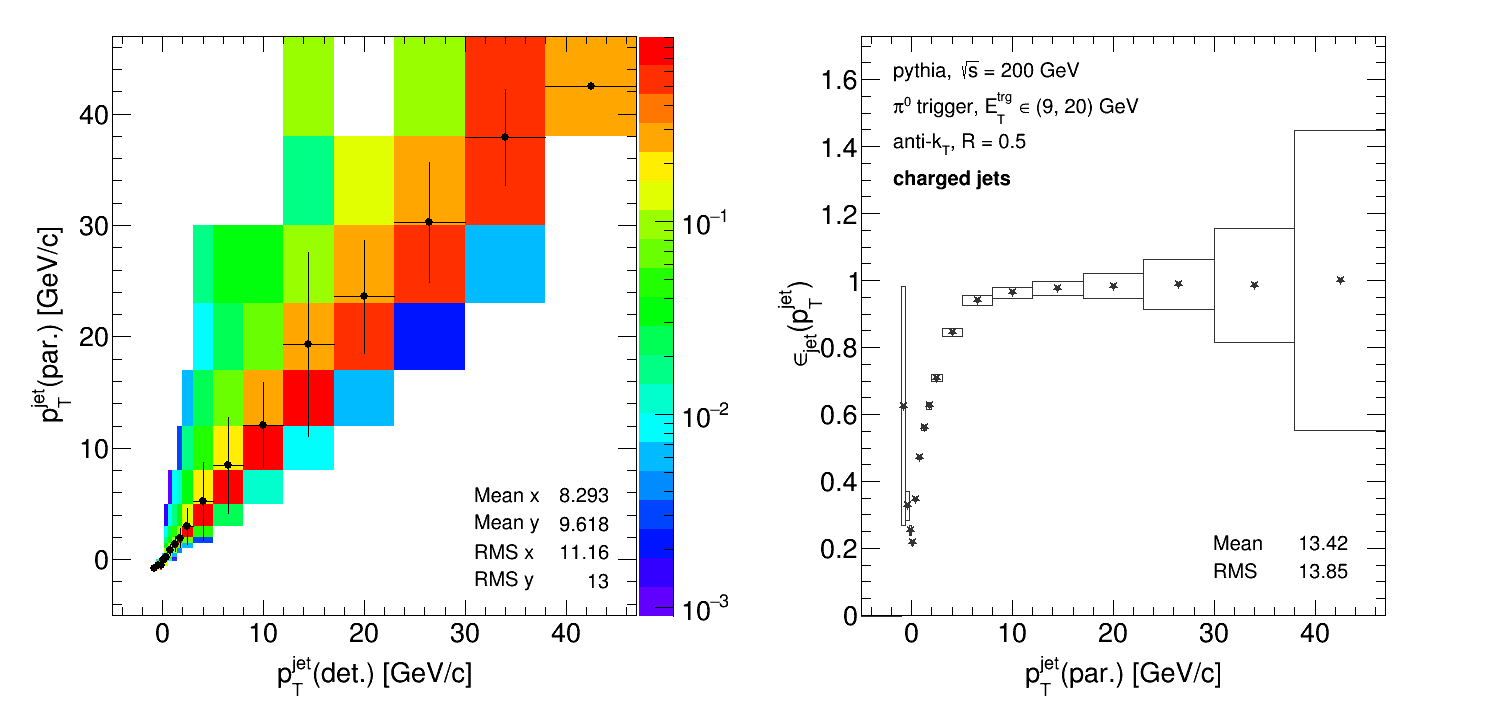

- dmawxc's blog
- Login or register to post comments
